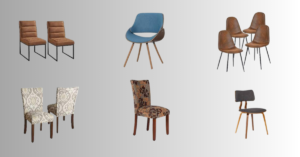In the symphony of kitchen tools, the humble cutting board takes center stage as a silent yet indispensable maestro, orchestrating the preparation of every culinary masterpiece. Beyond its fundamental role in providing a stable surface for chopping, slicing, and dicing,
he cutting board is a canvas where art and science converge. In this exploration of the culinary world’s unsung hero, we delve into the diverse universe of cutting boards, uncovering their history, functionality, and the transformative impact they can have on your kitchen experience.

List off cutting boards.


03.Bamboo Cutting Boards for Kitchen [Set of 3] Wood Cutting Board for Chopping Meat, Vegetables,


05.OXO Good Grips Plastic Utility Cutting Board 14.7″ x 10.3″



08.Epicurean Kitchen Series Cutting Board, 14.5 x 11.25 Inch, Natural

09.Dexas Grippboard Cutting Board with Non-Slip Feet, 11 by 14.5 inches, Dark Granite pattern and Black

10.Neoflam Microban Protection Cutting Board 3 Piece Set, Stain & Odor/BPA Free, Reversable Board..

The Evolution of the Cutting Board:
To appreciate the significance of cutting boards, let’s take a brief journey through time. From early civilizations using flat stones for food preparation to the intricately carved wooden boards of medieval kitchens, the evolution of cutting boards mirrors the
evolution of culinary techniques. Today, cutting boards come in a myriad of materials, each catering to different needs and preferences.
Beyond Functionality: Aesthetic and Cultural Significance:
While the primary function of a cutting board is to provide a safe and sanitary surface for food preparation, it’s worth noting the aesthetic and cultural significance these kitchen essentials carry.
Some cutting boards double as elegant serving platters, seamlessly transitioning from prep space to dining table. Others, with rich grains and artisanal craftsmanship, become cherished kitchen heirlooms, embodying a connection to tradition and culture.
Material Matters: Exploring Cutting Board Diversity:
Dive into the world of cutting boards, and you’ll encounter a diverse range of materials, each with its unique set of characteristics. From the classic wooden boards that add warmth and character to the kitchen to modern alternatives like bamboo, plastic, and composite materials
, the choices are as varied as the dishes you create. Understanding the properties of different materials allows you to tailor your cutting board selection to suit your cooking style and maintenance preferences.
Functionality Redefined: Specialized Cutting Boards:
In a world where culinary creativity knows no bounds, cutting boards have evolved beyond the traditional rectangular slab. Specialized boards,
featuring grooves for carving meats, grids for precise chopping, and even flexible mats for easy ingredient transfer, cater to the specific needs of diverse cooking styles. Discovering the right board for your kitchen can revolutionize the way you approach food preparation.
The Sustainable Kitchen: Eco-Friendly Cutting Boards:
With sustainability at the forefront of many minds, eco-friendly cutting boards have gained popularity.
Materials like bamboo and reclaimed wood offer environmentally conscious alternatives without compromising on durability and functionality. Making a mindful choice in your cutting board selection is a small yet impactful step towards a more sustainable kitchen.
Conclusion:
As we embark on this exploration of cutting boards, it becomes clear that these seemingly simple kitchen tools are anything but ordinary. They are vessels of history, expressions of culture, and facilitators of culinary innovation.
Whether you seek functionality, aesthetics, or sustainability, the right cutting board can transform your kitchen into a space where the art and science of cooking coalesce seamlessly. Join us on this culinary journey as we celebrate the unsung hero—the cutting board.
FAQ..
What is the best material for a cutting board?
The best material depends on your preferences and needs. Wood, especially maple and bamboo, is popular for its durability and aesthetic appeal. Plastic cutting boards are affordable and easy to clean. Consider your cooking habits and maintenance preferences when choosing a material.
Are wooden cutting boards safe for food preparation?
Yes, wooden cutting boards are safe for food preparation. Proper maintenance, such as regular cleaning and oiling, helps prevent the growth of bacteria. Wooden boards also have natural antimicrobial properties that make them a safe and sanitary choice.
How do I clean and maintain my cutting board?
For wooden cutting boards, clean with mild soap and warm water, and dry it immediately. Avoid submerging it in water for extended periods. Periodically, apply food-grade mineral oil to keep the wood hydrated. Plastic boards can be cleaned in the dishwasher or by hand with hot, soapy water.
Can I use a cutting board for both meat and vegetables?
It’s recommended to have separate cutting boards for meat and vegetables to prevent cross-contamination. If using one board, wash it thoroughly between uses, or consider using color-coded boards to designate specific uses.
What are the benefits of using a bamboo cutting board?
Bamboo cutting boards are popular for their sustainability, as bamboo is a rapidly renewable resource. They are also durable, lightweight, and have natural antimicrobial properties. Additionally, bamboo boards are knife-friendly, reducing the wear on your knives.
Do I need a special cutting board for carving meat?
While not mandatory, a cutting board with a groove or well to catch juices can be beneficial when carving meat. This helps keep your workspace clean and makes it easier to collect juices for sauces or gravies.
Are there cutting boards that are dishwasher safe?
Plastic cutting boards are generally dishwasher safe. However, wooden cutting boards may warp or crack with repeated exposure to high heat and moisture. Always check the manufacturer’s guidelines for specific care instructions.
What is the best way to remove stains or odors from a cutting board?
For stains, a mixture of baking soda and water or lemon juice can be effective. To eliminate odors, try rubbing the board with salt or a mixture of vinegar and water. Let the solution sit for a while before rinsing and drying the board thoroughly.
Can cutting boards be used as serving platters?
Many cutting boards, especially those with attractive designs or made from premium materials, double as stylish serving platters. They provide a seamless transition from kitchen to table, adding a touch of sophistication to your dining experience.
Are there cutting boards designed for specific kitchen tasks?
Yes, specialized cutting boards are available for various tasks. Some have grooves for carving meats, grids for precise chopping, or flexible mats for easy ingredient transfer. Consider your cooking preferences and style when choosing a cutting board designed for specific tasks.


